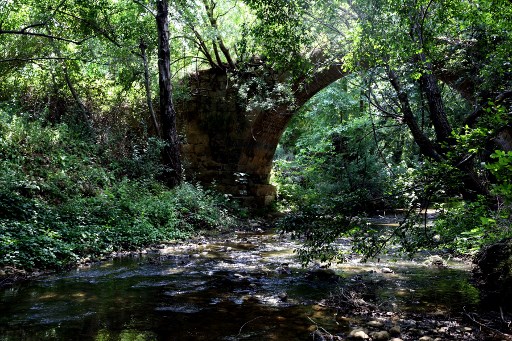Lebanon’s government says a dam planned for Bisri valley south of the capital Beirut is vital to tackle chronic water shortages, but the location on a seismic fault line has raised fears among residents.
According to the government and the World Bank, the Bisri dam, 35 kilometers south of Beirut, is desperately needed to address water shortages afflicting greater Beirut’s 1.6 million residents.
They insist the structure will be safe and say measures will be taken to mitigate seismic risks.
But Amer Meshmushi, a resident of Bisri Valley asked: “How can you build a dam in an earthquake zone? We don’t even have houses that are earthquake-proof?”
He grew up hearing about the last major earthquake on the Roum fault, in 1956, which killed 135 people and damaged thousands of houses including his family home in Basaba village.
“My brother was still little, and they had to drag him out from under the rubble,” the 50-year-old recalled his parents telling him as a child.
Meshmushi’s concerns are shared by local activists, including Raja Noujaim, head of the Association for the Protection of the Lebanese Heritage.
“When we look at the region’s history and geography, we see that all of its valleys are the result of the fact that it is a seismic zone,” he told Agence France Presse.
Activists say an earthquake could cause the dam to burst and that the structure and its reservoir would put pressure on the fault line and increase seismic activity.
The World Bank and Lebanon’s Council for Development and Reconstruction (CDR) identified the valley as a prime location for a dam thanks to its abundant water, wide basin and proximity to Beirut.
In a report, the World Bank said a panel of four “internationally recognized experts” recruited by the CDR had reviewed safety studies, adding that the dam’s design was “consistent with international best practice”.
The World Bank told AFP that tests showed the dam had “a resistance to shocks above the one provoked by the 1956 earthquake,” which measured a six on the Richter scale — similar to the strength of the quakes that devastated central Italy last year.
Eli Mussali, the CDR engineer overseeing the project, said the dam could “withstand earthquakes up to eight on the Richter scale, which is a very high degree.”
He noted the country’s largest dam, in the eastern region of Qaraoun, is situated atop the major Yammouneh fault line.
At present, Lebanon stores just six percent of its water in reservoirs. Many people rely on illegally drilled wells that are increasingly over-exploited and produce water of dubious quality.
Construction of the Bisri dam is expected to begin later this year with a $617-million price tag, mostly covered by a World Bank loan.
It will take nine years to finish and will be the country’s second-largest dam, with a capacity of 125 million cubic meters in a reservoir covering 450 hectares.
Land belonging to 15 villages will be gobbled up by the facility, including Meshmushi’s fields.
“Does it serve Beirut’s interests to wipe out farmers?” he asked.
“These lands are the source of our livelihoods. They allowed me and my brother to get an education.”
